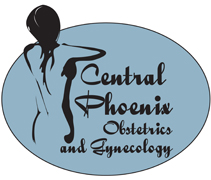By CPOG Team on June 12, 2017 in Health
0
0
The opioid epidemic has been building for over twenty years. There are many theories for what led to this situation but everyone agrees there were many contributing factors. This article will give an overview of what we mean by epidemic, some of the circumstances that led to this health crisis for the nation and some actions we can take to respond.
The epidemic in brief
- The United States makes up only 5 percent of the world’s population but 80% of the prescription drug use
- From 2000 to 2015 more than half a million people died from drug overdoses
- Since 1999, the amount of prescription opioids sold in the U.S. nearly quadrupled
- Since 1999, the number of overdose deaths involving opioids (including prescription opioids and heroin) quadrupled. Today 91 Americans die every day from an opioid overdose. A
- Drug overdose is now the leading cause of death for people under 50 in the United States.
- In 2016 almost 800 Arizonans died from opiate related overdose
- In 2011, there were 9,512 cases involving opioid abuse/dependency in Arizona Emergency Departments – 2,391 cases were youth and young adults (<24 yrs)
- Between 2008-2013, almost 3 out of every 1,000 babies born in Arizona were diagnosed with Neonatal Abstinence Syndrome (primarily caused by maternal opiate use)
Who is addicted?
- A teen takes one of her mom’s left over Percocet then another then another…
- A 48 year old man is prescribed Vicodin after back injury, pain is chronic so keeps getting refills, sees pcp for refill when pills ‘run out’ before next refill
- A twenty year old who tries “oxy” at a party and now is using heroin to get the same high
- A new born whose mother was taking pills or heroin during pregnancy (neonatal abstinence syndrome)
- A 35 year old starts using hydrocodone for pain relief after a car accident. She is in ‘constant pain’ without it.
How did we get here?
- 10-20 yrs ago the medical community realized we were not paying enough attention to complaints of pain. Providers were reeducated to see pain ‘fifth vital sign’ and make sure it was treated adequately.
- At the same time, pain medicines became available that were easily tolerated, and fast acting. (It turns out they are also incredibly addictive. I’m not sure if the manufacturers were aware of just how much but the medical community was unaware.)
- At the same time, there is a significant stigma toward mental health issues and a significant lack of services for mental health needs and substance abuse services. For example, the entire state of Arizona is a
What to do now
- Decrease opioid related deaths
-
- Improve opioid prescribing to limit patient exposure to highly addictive opioids.
- Expand access to evidence-based substance abuse treatment
- Expand access and use of naloxone—a safe antidote to reverse opioid overdose
- Safeguards in prescription system to identify over-prescribers and drug seekers. Prescription drug monitoring systems allow providers to monitor their own prescribing patterns and to better monitor over users who may be getting prescriptions filled at multiple doctors and pharmacies.
- Use various approaches to pain relief including:
- Massage
- Acupuncture
- Exercise and Physical therapy
- Find a pharmacy or another safe disposal location to return unused opioid medications
- Talk to your children about drugs and alcohol
- Address emotional component of physical pain

